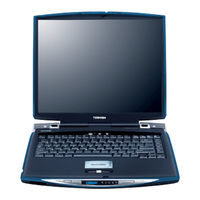User Manuals: Toshiba 5105-S701 Laptop (Pentium 4)
Manuals and User Guides for Toshiba 5105-S701 Laptop (Pentium 4). We have 1 Toshiba 5105-S701 Laptop (Pentium 4) manual available for free PDF download: User Manual
Advertisement
Advertisement
